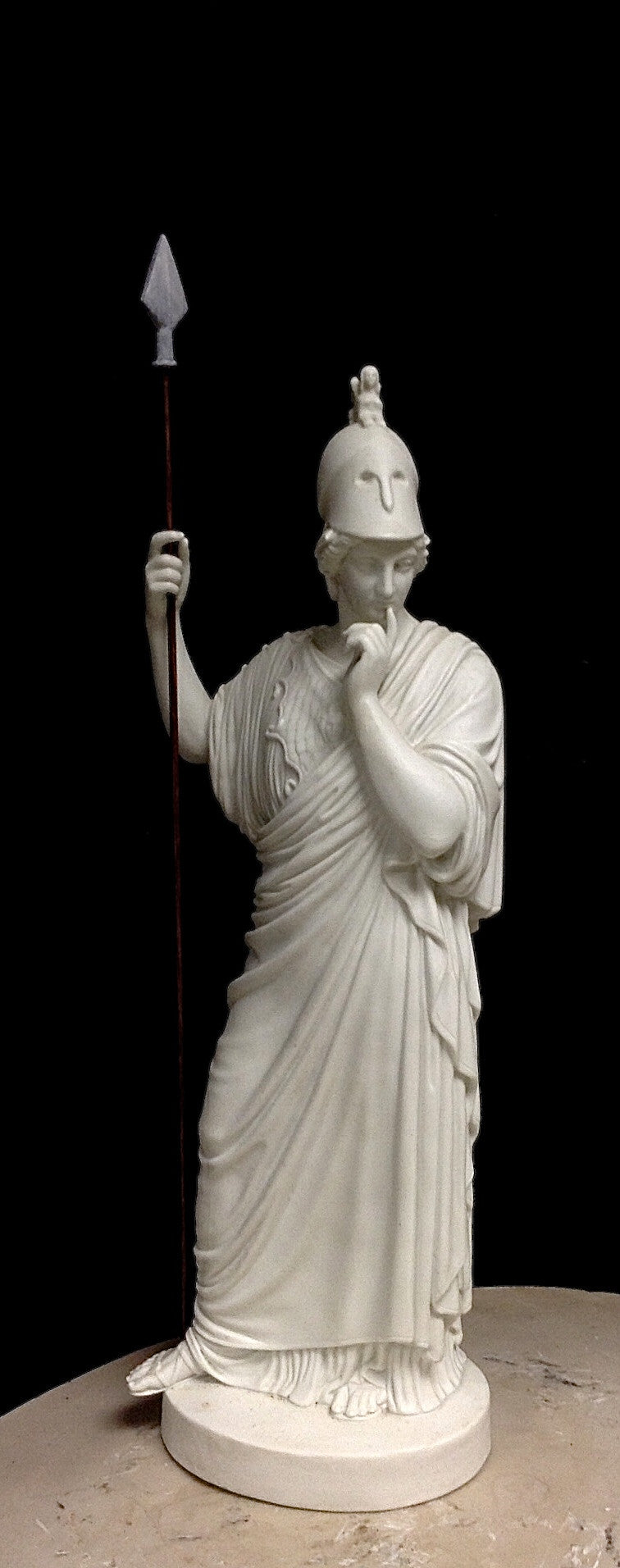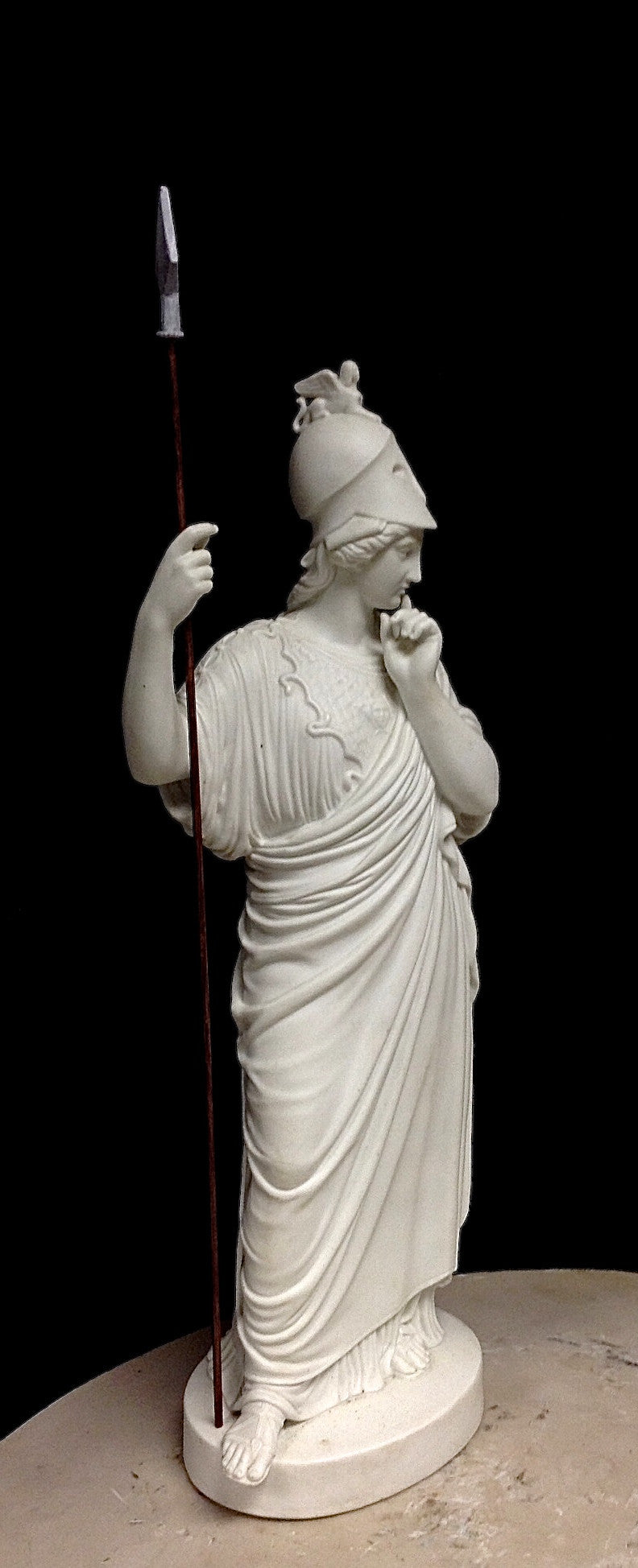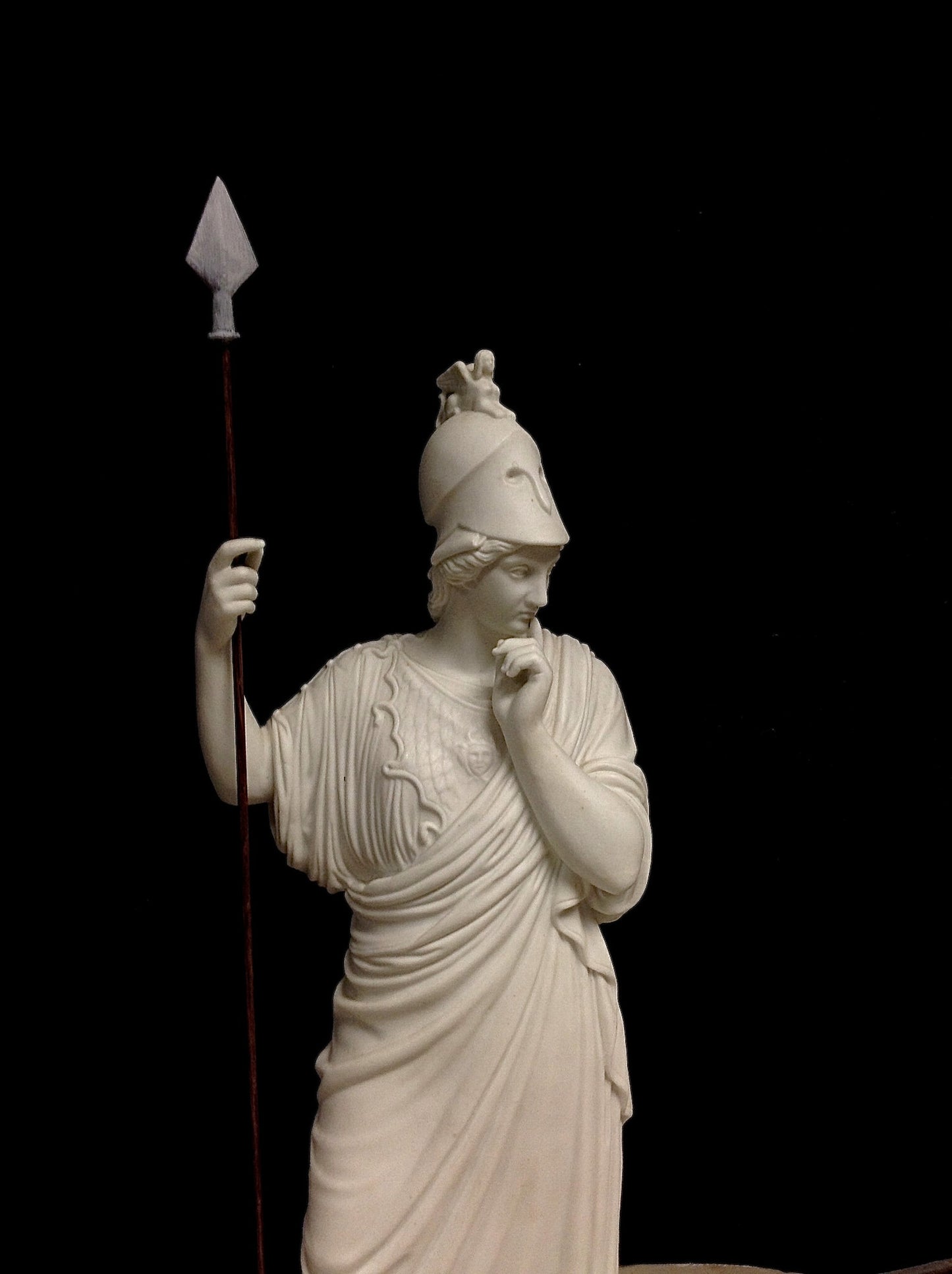Marble Sculpture
Athena Statuette
Athena Giustiniani statuette.
The marble Athena Giustiniani or Giustiniani Minerva is an Antonine Roman marble copy of a Greek sculpture of Pallas Athena, of the late fifth-early fourth century BC.
The sculpture was probably a cult image rather than a decorative culture trophy. It was discovered in the early 17th century, reputedly in the ruins of a ten-sided nymphaeum on the Esquiline Hill which thus mistakenly identified as a "Temple of Minerva Medica", Pietro Santi Bartoli, also in the 17th century, gave an alternative discovery site, in the Orto di Minerva adjacent to the church of Santa Maria sopra Minerva, which was widely thought to have been built over a temple of Minerva (dedicated by Pompey the Great in 62 BC). On the basis of its quality, it was reputed well into the 19th century to be a copy of a statue by Pheidias, and was included among stucco casts representing Europe's great sculpture that formed part of the German pavilion at the Louisiana Purchase Exposition, St. Louis, 1904.[6]
The statue receives its name from having been in the collection of Vincenzo Giustiniani, who in the beginning of the 17th century built the Roman Palazzo Giustiniani, and formed the art collection the Galleria Giustiniana (Rome, 1631).
Apparently the sculpture was never copied during the time it was in the Giustiniani collection: Winckelmann never mentioned it, though the austere classical style it exhibits was first isolated and described by him. Towards the end of the century it had become an object of admiration especially among the British visitors: a custodian of the Giustiniani told Goethe that the restored hand was whiter than the rest of the work because the English had kissed it so often.
A bust adapted from this "Minerva", also available from sculptured arts, appears as a tabletop accessory in more than a dozen of Pompeo Batoni's portraits of English visitors to Rome.
When the French sculptor Claude Michel, who adopted the Greek name "Clodion", was a pupil at the French Academy in Rome (1762–71), he made a refined and highly-finished terracotta Minerva that is a pastiche of several approved antiquities, notably the Minerve Giustiniani.
The Minerva Giustiniani as it was called, escaped the fate of the rest of the Giustiniani collection, which had been removed in 1807 during the Napoleonic occupation to Paris, where it was to some extent broken up.
In 1815 all that remained of it, in particular about 170 paintings, was purchased by Frederick William III of Prussia and removed to Berlin, where it formed a portion of the royal museum.
The Minerva however had been bought by Lucien Bonaparte in 1805, and was installed in the grand hall of his Roman residence, the Palazzo Nunez.
In 1817 he sold it to Pope Pius VII who was commissioning the Braccio Nuovo of the Vatican Museums. When the Braccio Nuovo was opened in 1822, the sculpture was installed as it is today.
Size.
42H x 14W x 10D cm
Couldn't load pickup availability





